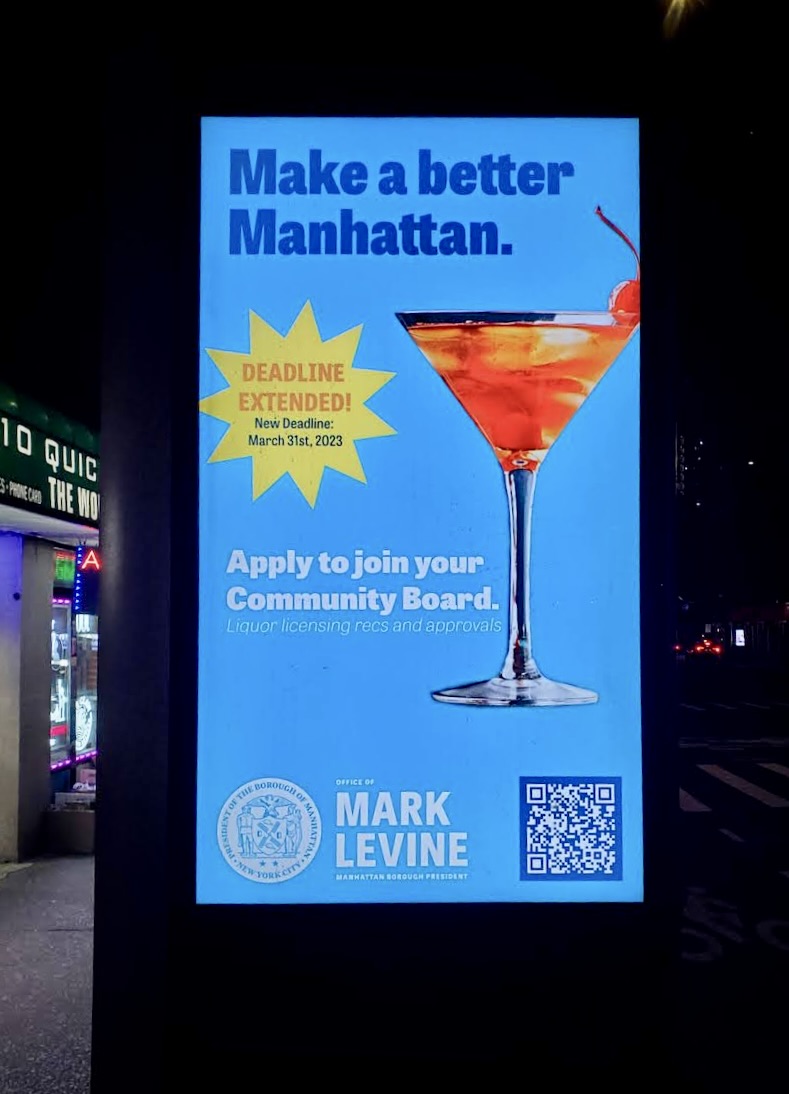BY DARREN BLOCH | Nonprofit human service organizations serve as a lifeline for millions of New Yorkers each year, providing mental health resources, operating food banks, managing homeless shelters and so much more. While New York City invests hundreds of millions of dollars each year to create and support those services, there is rarely funding available or deployed to promote these offerings.
As a result, far too many of the New Yorkers who would benefit most from these public and philanthropic community investments — many of our most vulnerable neighbors — miss out on readily available services and programs designed to help individuals, families and communities survive and thrive.
It’s within that backdrop that LinkNYC’s screens have started to become a literal bright light in our fight to ensure more New Yorkers can access the vital resources we and our peers provide and that so many need. Through its LinkLocal program, LinkNYC provides free advertising to nonprofits like Greenwich House, so we can reach new neighbors and better connect with the clients we already serve, all while helping to bring every New Yorker into the 21st century through free, high-speed Internet access.
For years now, LinkNYC’s screens have served as New York City’s public address system. They provide updates on subway train times, bus arrivals and local community events. During the pandemic, LinkNYCs in every borough shared critical health and safety messages. And now, they offer a highly effective means for Greenwich House to connect with New Yorkers about our services, which include free lunches for adults age 60 and older, mental and behavioral health services, digital literacy workshops, job search and training programs, as well as music lessons and pottery classes for all ages.
As a lifelong New Yorker who has worked in and around city government for 25 years, I’m mindful of the challenge to keep our streetscapes unobstructed and clutter-free. Since 2015, LinkNYC has steadily blanketed the entire city in a simple but robust digital safety net — free Wi-Fi, nationwide phone calling, access to social services and device charging for every resident and visitor, at zero cost to users or taxpayers. They have proven to be a thoughtful and responsive partner in the effort to better connect New Yorkers with critical resources. In fact, the most-called number from LinkNYC kiosks is the New York State benefits helpline, which supports New Yorkers as they apply for food stamps and access other programs to help them get back on their feet.
In short, LinkNYC allows us to do our jobs better and create an outsized positive impact in the Manhattan neighborhoods we serve.
As the program expands its presence across the five boroughs with its new Link5G smart poles, elected officials and community partners should take note of the immense potential this infrastructure has to foster equity, health and stability for all New Yorkers. And for our part at Greenwich House, we can clearly see the ways LinkNYC and its digital safety net are and will continue to help meet the needs of the communities we serve, now and in the years and decades to come.
Bloch is C.E.O. and executive director, Greenwich House.


Weren’t LinkNYC kiosks the brainchild of Mayor de Blasio? He’s been much maligned, but here’s something I believe he fostered. Those kiosks are a wonderful idea in many ways.
I don’t know about 5G installations–they’ve been praised and panned. We’ll see.